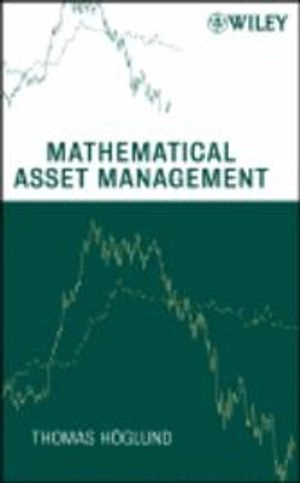A practical approach to the mathematical tools needed to increase portfolio growth, learn successful trading strategies, and manage the risks associated with market fluctuation Mathematical Asset Management presents an accessible and practical introduction to financial derivatives and portfolio selection while also acting as a basis for further study in mathematical finance.
Assuming a fundamental background in calculus, real analysis, and linear algebra, the book uses mathematical tools only as needed and provides comprehensive, yet concise, coverage of various topics, such as:
Interest rates and the connection between present value and arbitrage
Financial instruments beyond bonds that serve as building blocks for portfolios
Trading strategies and risk performance measures
Stochastic properties of stock prices
The difference between expected return and expected growth and the geometric Brownian motion
Diversification through the creation of optimal portfolios under various constraints
The use of the Capital Asset Pricing Model to accurately estimate the difference between the return of the market and the short rate
To further demonstrate the reality of the discussed concepts, the author analyzes five active stocks over a four-year period and highlights the different methods and portfolios that exist in today's economic world. Exercises are also provided throughout the text, along with the solutions, allowing readers to measure their understanding of presented techniques as well as see how the methods work in real life.
Mathematical Asset Management is an excellent book for courses in mathematical finance, actuarial mathematics, financial derivatives, and financial engineering at the upper-undergraduate and graduate levels. It is also a valuable reference for practitioners in banking, insurance, and asset management industries.
Åtkomstkoder och digitalt tilläggsmaterial garanteras inte med begagnade böcker





















